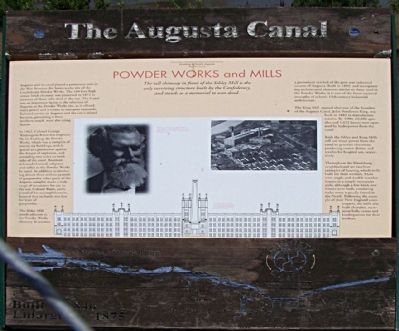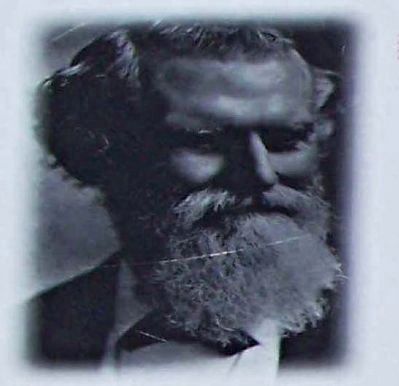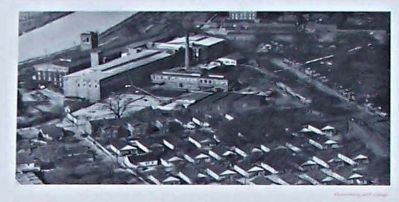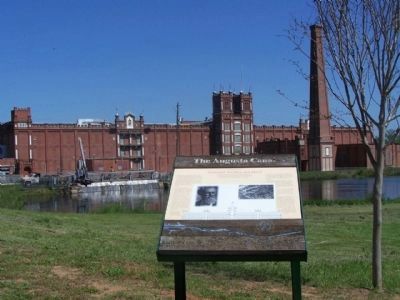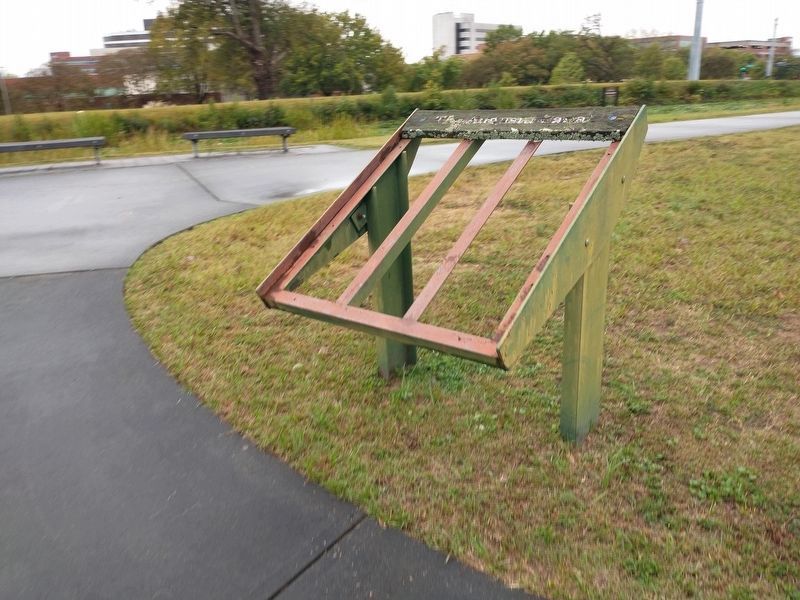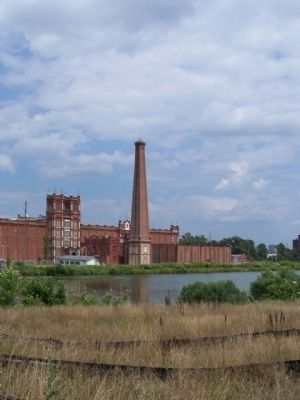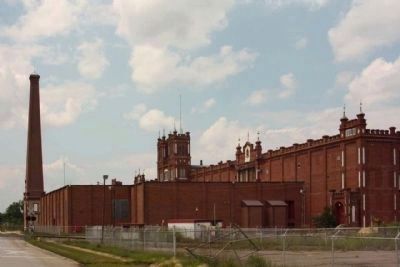Augusta in Richmond County, Georgia — The American South (South Atlantic)
The Augusta Canal
Powder Works and Mills
The tall chimney in front of the Sibley Mill is the only surviving structure built by the Confederacy, and stands as a memorial to war dead.
Augusta and its canal played a prominent role in the War between the States as the site of the Confederate Powder Works. The 168 foot high ornate brick chimney was preserved in 1872 in memory of those who died in the war. The Canal was an important factor in the selection of Augusta as the Powder Works site, as it offered water power and a means to transport materials. Railroad service to Augusta and the city's inland location, protecting it from northern attacks, were also siting factors.
In 1862, Colonel George Washington Rains (Picture included) was responsible for building the Powder Works, which was a complex of twenty-six buildings, widely spaced as a precaution against the danger of explosion, and extending two miles on both sides of the canal. Boatman delivered charcoal, saltpeter, and sulfur to the Powder Works by canal. In addition to producing almost 3 million pounds of gunpowder, other parts of the Augusta complex made a wide range of munitions for use in the war. Colonel Rains, justly proud of his accomplishments, boasted that no battle was lost for want of gunpowder.
The Sibley Mill stands adjacent to the Powder Works chimney. It remains a prominent symbol of the post war industrial success of Augusta. Built in 1880, and incorporating architectural elements similar to those used in the Powder Works, it is one of the finist national examples of eclectic 19th century industrial architecture.
The King Mill, named after one of the founders of the Augusta Canal, John Pendleton King, was built in 1882 to manufacture textiles. By 1900, 1812 looms were operated by hydropower from the canal.
Both Sibley and King Mills still use water power from the canal to generate electricity, producing cotton denim and textiles for hospital use, respectively.
Throughout the Harrisburg neighborhood are excellent examples of housing which mills built for their workers (Picture included). Most were single and double wooden houses in a simple vernacular style, although a few brick row houses were built, emulating styles more typically found in the North. Following the example of their New England counterparts, the mills also built churches, recreation halls, stores and kindergartens for their workers.
(Drawing of Mill included) (Carving shows Canal Stevens Creek Dam to Water Works) Built 1846
Enlarged 1875
Erected by Augusta Canal Authority Funding by Searle Augusta
.
Topics. This historical marker is listed in these topic lists: Industry & Commerce • War, US Civil • Waterways & Vessels. A significant historical year for this entry is 1872.
Location. Marker is missing. It was located near 33° 29.223′ N, 81° 59.679′ W. Marker was in Augusta, Georgia, in Richmond County. Marker was on Eve Street near Pearl Street, on the right when traveling north. Marker lies across the canal from the Mill and Confederate chimney. Touch for map. Marker was in this post office area: Augusta GA 30904, United States of America. Touch for directions.
Other nearby markers. At least 8 other markers are within walking distance of this location. Explosion At The Confederate Powder Works (within shouting distance of this marker); Confederate Obelisk-Chimney (about 700 feet away, measured in a direct line); The Confederate States Powder Works (about 700 feet away); White House Tract (approx. 0.2 miles away); Confederate Powder Works (approx. 0.4 miles away); Crossroads of the Southeast (approx. half a mile away in South Carolina); The Power of the Savannah River (approx. 0.6 miles away in South Carolina); Boeckh Park (approx. 0.7 miles away in South Carolina). Touch for a list and map of all markers in Augusta.
Regarding The Augusta Canal. Currently there looks to be a restoration project underway to help preserve some of the single and double wooden houses, as mentioned, along nearby Broad Street
Credits. This page was last revised on November 26, 2022. It was originally submitted on August 9, 2010, by Mike Stroud of Bluffton, South Carolina. This page has been viewed 1,347 times since then and 24 times this year. Last updated on November 15, 2022, by Craig Doda of Napoleon, Ohio. Photos: 1, 2, 3. submitted on August 9, 2010, by Mike Stroud of Bluffton, South Carolina. 4. submitted on April 19, 2012, by Mike Stroud of Bluffton, South Carolina. 5. submitted on November 15, 2022, by Craig Doda of Napoleon, Ohio. 6, 7. submitted on August 9, 2010, by Mike Stroud of Bluffton, South Carolina. • Bernard Fisher was the editor who published this page.
